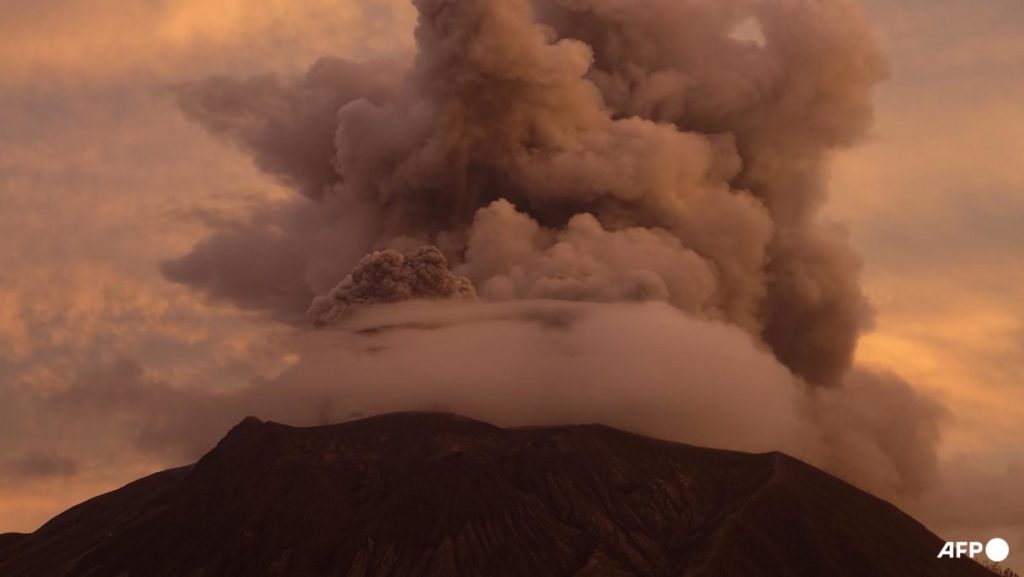Thousands of residents have been evacuated from the Indonesian island of Tagulandang after Mount Ruang erupted on Friday. The eruption caused volcanic rocks to rain down on homes, leaving houses empty and parts of the island without electricity. The communications system was knocked out on both Ruang and Tagulandang islands, affecting around 20,000 people. Sahid Samihing, a 53-year-old resident, expressed concern that his belongings would be destroyed by the volcanic rocks hitting his roof.
More than 6,000 residents of Tagulandang have been evacuated to the other side of the island that faces away from the crater, according to Joikson Sagunde, an official from the Sitaro islands disaster management agency. While there have been no reports of deaths or injuries, authorities aimed to evacuate 11,000 people from the exclusion zone. Some affected individuals found shelter in makeshift shelters at churches and school buildings. The closure of a nearby international airport in Manado city, more than 100km from the crater, was extended to ensure safety.
The alert level has been maintained around the crater of Mount Ruang, with warnings of potential further eruptions and collapsing parts of the volcano into the sea that could trigger a tsunami. In 2018, Mount Anak Krakatoa partially collapsed during a major eruption, leading to a devastating tsunami that claimed over 400 lives and injured thousands. Mount Ruang’s last significant eruption occurred in 2002, requiring residents to be evacuated. Indonesia frequently experiences seismic and volcanic activity due to its location on the Pacific “Ring of Fire”, a region known for such occurrences.
The eruption of Mount Ruang has left residents of Tagulandang frightened and concerned for the safety of their homes and belongings. The evacuation efforts have been extensive, with thousands of individuals relocated to a safer area away from the volcano’s crater. The closure of the international airport in Manado city and the maintenance of an exclusion zone around Mount Ruang are precautionary measures to prevent any further dangers that may arise from the eruption. This incident serves as a reminder of the constant threat of volcanic activity in Indonesia due to its geographical position on the Pacific “Ring of Fire”.
The impact of the Mount Ruang eruption has disrupted daily life for residents in Tagulandang, leaving many without electricity and facing potential damage to their homes from volcanic rocks. The fear and uncertainty caused by the eruption have forced thousands to seek shelter in makeshift facilities, highlighting the importance of disaster preparedness and response in such situations. The history of volcanic activity in Indonesia, including the devastating events of the Mount Anak Krakatoa eruption in 2018, underscores the need for vigilance and proactive measures to mitigate the risks posed by such natural disasters.
As efforts continue to ensure the safety and well-being of those affected by the Mount Ruang eruption, the resilience and strength of the Indonesian communities facing these challenges are evident. The coordinated response from local authorities, disaster management agencies, and residents themselves demonstrates the unity and determination to overcome the difficulties brought about by the volcanic eruption. The enduring threat of volcanic activity in Indonesia necessitates ongoing monitoring and preparedness to minimize the impact on lives and property. The resilience and solidarity displayed during this crisis serve as a testament to the spirit of cooperation and resilience in the face of adversity.


